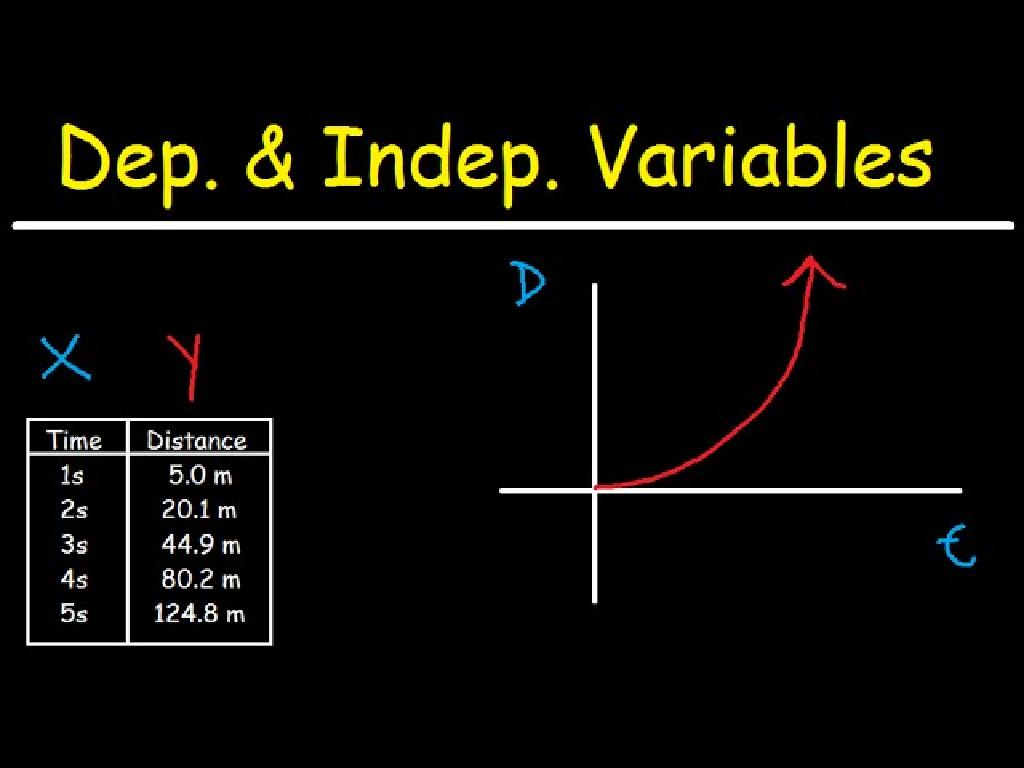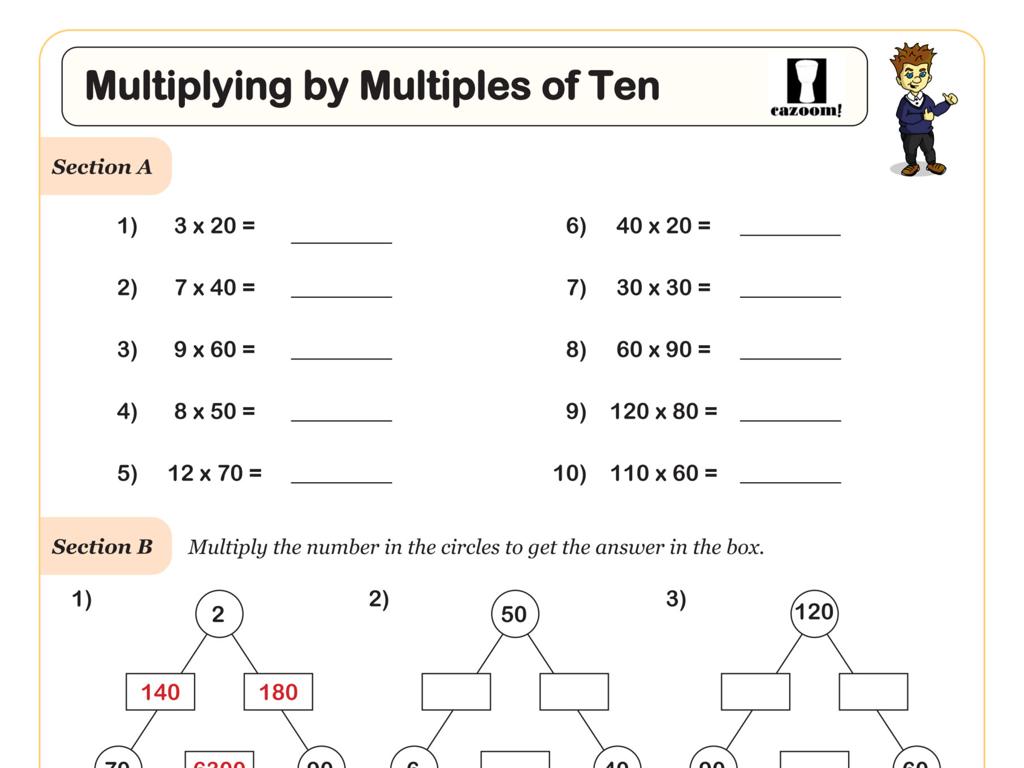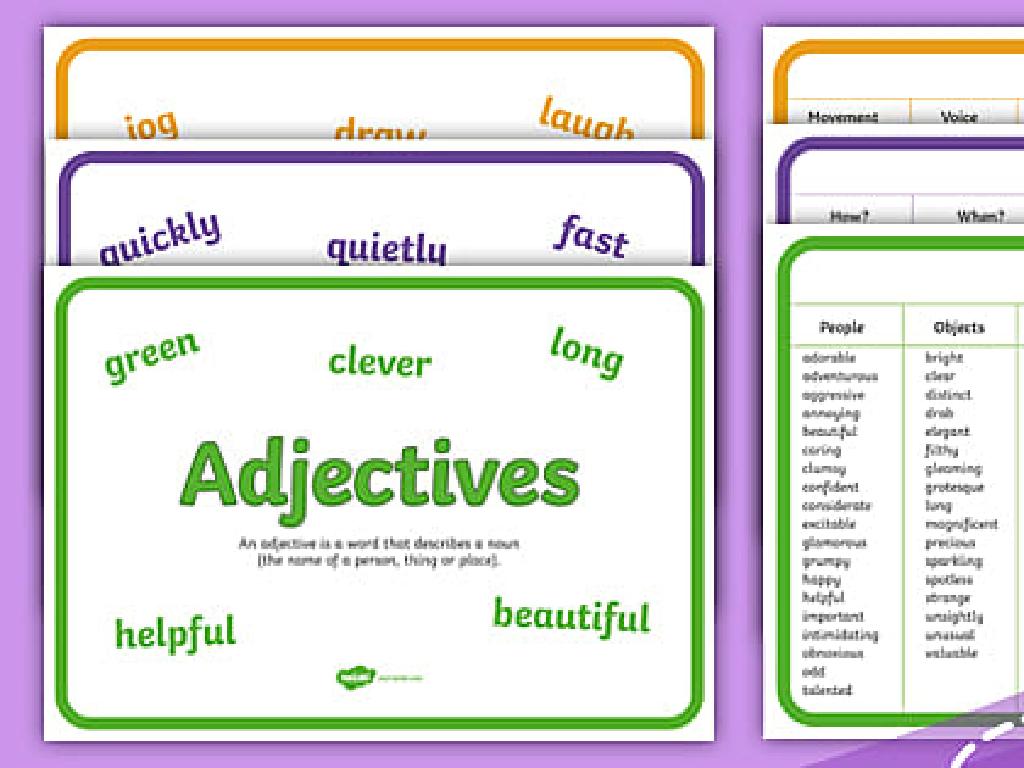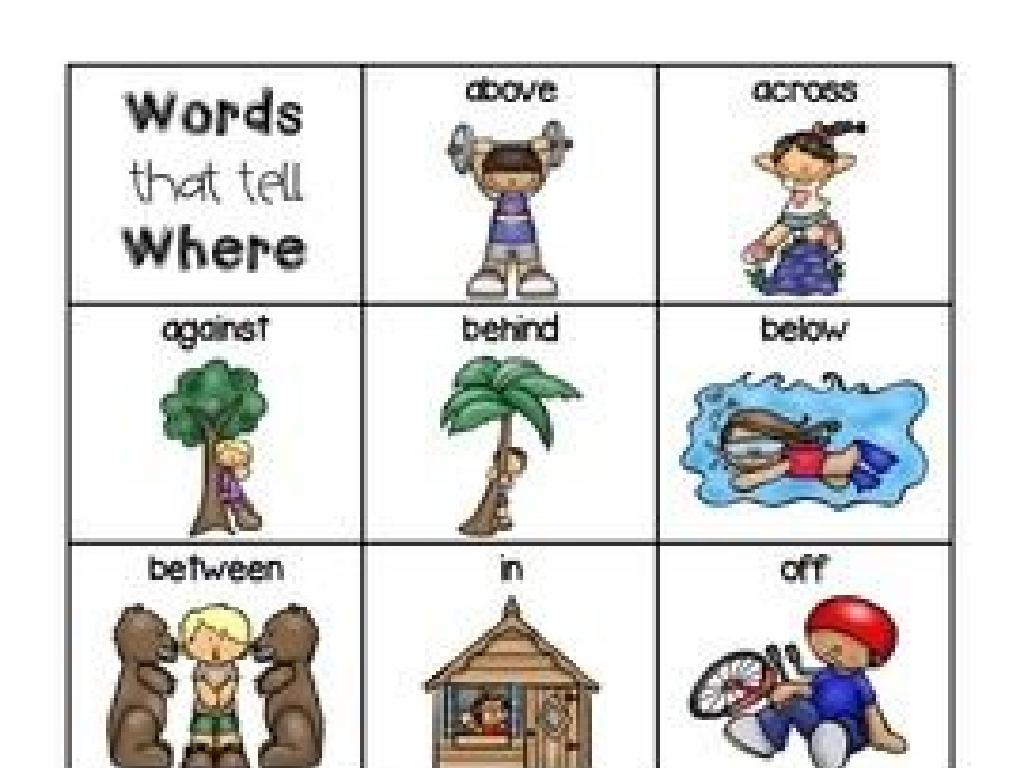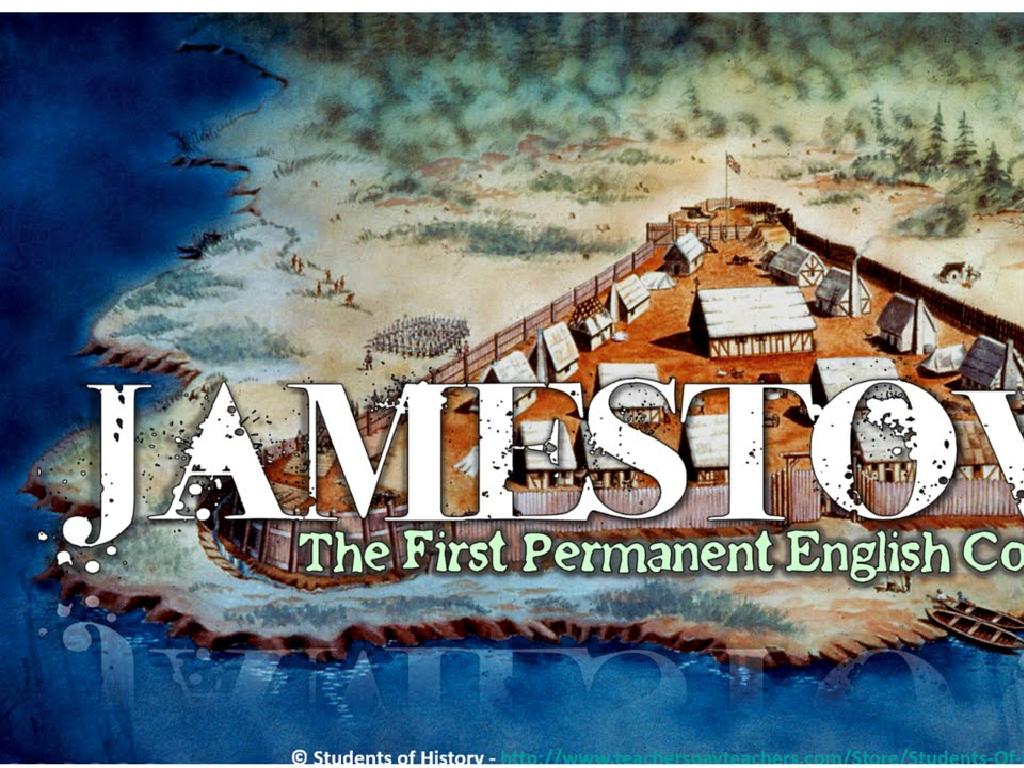Multiply A 2-Digit Number By A 2-Digit Number: Word Problems
Subject: Math
Grade: Fourth grade
Topic: Multiply By Two-Digit Numbers
Please LOG IN to download the presentation. Access is available to registered users only.
View More Content
Today’s Adventure: Multiplying Big Numbers!
– Multiplication as repeated addition
– If you have 4 groups of 3 apples, that’s 3+3+3+3 or 4 times 3!
– Real-world use of two-digit multiplication
– To buy multiple items or to calculate area, we use multiplication.
– Steps to multiply two-digit numbers
– Line up the numbers and multiply each digit, then add the results.
– Practice with word problems
– We’ll solve problems like buying 23 balloons for 15 parties.
|
Begin by explaining multiplication as a faster way of adding the same number multiple times. Emphasize the importance of two-digit multiplication in everyday scenarios, such as shopping or calculating areas. Walk through the steps of multiplying two-digit numbers, ensuring to clarify the process of carrying over numbers. Provide word problems that are relatable to the students, such as buying balloons for a number of parties, to apply what they’ve learned. Encourage students to visualize the problems and work through them step by step.
Multiplication Vocabulary
– What is a Multiplicand?
– The number we multiply, e.g., in 23 x 15, 23 is the multiplicand.
– Understanding the Multiplier
– The number that multiplies the other, e.g., in 23 x 15, 15 is the multiplier.
– Defining the Product
– The answer we get from multiplication, e.g., 23 x 15 gives a product of 345.
– Applying Vocabulary to Problems
– Use these terms when solving word problems.
|
This slide introduces the basic vocabulary of multiplication necessary for understanding and solving word problems involving the multiplication of two-digit numbers. The multiplicand is the number that is to be multiplied, while the multiplier is the number that it is to be multiplied by. The product is the result of this multiplication. It’s crucial for students to familiarize themselves with these terms as they will be used frequently in problem-solving. Encourage students to identify these components in multiplication problems to help them understand the structure of the equation and how to solve it. Provide additional examples and practice problems to reinforce these concepts.
Visualizing Multiplication with Arrays
– Draw an array for 12 x 3
– Arrays show multiplication as rows and columns of squares
– Understand rows and columns
– Rows represent one factor, columns the other
– Count squares for the product
– Each square in the array represents ‘1’, so count them all to multiply
|
This slide is aimed at helping students visualize the process of multiplication by using arrays. Start by drawing an array to represent 12 x 3, with 12 rows and 3 columns. Explain that each row represents a group of 3. Then, guide the students to count the total number of squares in the array to find the product of the multiplication. This visual method helps students understand the concept of multiplication as repeated addition and prepares them for more complex problems. Encourage students to draw their own arrays for different multiplication problems to reinforce the concept.
Step-by-Step Multiplication
– Multiply each digit separately
– Like building blocks, each digit’s product adds to the total
– Start with the ones place
– Ones are the building blocks of numbers
– Move to the tens place next
– Tens are the next layer of our number building
– Carry over numbers larger than 9
– If a product is 10 or more, the extra goes to the next place value
|
This slide is designed to teach students the process of multiplying two-digit numbers in a step-by-step manner. Begin by explaining that multiplication is like adding a number to itself multiple times, and when dealing with two-digit numbers, we handle each digit individually. Emphasize starting with the ones place as it’s the foundation of our number system. Then, guide them to the tens place, which represents a group of ten ones. Remind students to ‘carry over’ when a product exceeds 9, placing the extra value in the next column to the left. Use examples like 23 x 45, breaking it down into (20 x 40) + (20 x 5) + (3 x 40) + (3 x 5) to illustrate the process. Encourage students to practice with different numbers and to check their work by reversing the multiplication.
Multiplying Two-Digit Numbers: Step-by-Step
– Start with multiplying the ones
– Multiply 5 (ones of 45) by 3 and 2 (of 23)
– Multiply the tens, shift left
– Multiply 4 (tens of 45) by 3 and 2 (of 23), shift the result one place left
– Add the results together
– Solve the example: 23 x 45
– 5 x 3 = 15 and 5 x 2 = 10; 4 x 3 = 12 and 4 x 2 = 8, shift these left
|
This slide introduces students to the process of multiplying two-digit numbers. Begin by focusing on the ones place. For example, multiply 5 (the ones place of 45) by 3 and then by 2 (the digits of 23). Write down the results. Next, multiply the tens place (4 of 45) by each digit of 23, remembering to shift these numbers one place to the left because they represent tens, not ones. After calculating both parts, add them together to find the final product. Use the example problem 23 x 45 to illustrate the process step by step, ensuring to align numbers correctly during addition. Encourage students to practice with different numbers to gain confidence.
Multiplication Practice: 34 x 76
– Multiply 34 by 76 independently
– Use the grid method for organization
– Break numbers into tens and ones, then make a grid to multiply parts
– Discuss your solution with a partner
– Explain your process and compare answers
– Understand each step of your work
– Ensure you know why each step is taken
|
This slide is aimed at providing students with a practical exercise to apply their knowledge of multiplying two-digit numbers. The grid method will help them break down the problem into smaller, more manageable parts, which reinforces place value understanding. Encourage students to work independently first to assess their grasp of the concept. Afterward, they should partner up to discuss their methods and results, promoting collaborative learning and peer review. As a teacher, walk around the classroom to offer guidance and ensure that each student understands the multiplication process. Be prepared to provide additional examples or strategies if students are struggling with the concept.
Multiplying Two-Digit Numbers: Word Problems
– Apply multiplication to real life
– Read carefully to find numbers
– Look for clues in the text for numbers to use
– Identify numbers to multiply
– Find the two numbers that we need to multiply together
– Solve a problem as a class
– Example: If a farmer has 24 rows of apple trees with 36 trees in each row, how many trees are there in total?
|
This slide is aimed at helping students apply their multiplication skills to solve real-world problems. Encourage them to read the problem text thoroughly to understand the scenario and identify the relevant numbers. Emphasize the importance of understanding the context to figure out which numbers to multiply. Work through an example problem as a class to demonstrate the process. For instance, use the example of a farmer planting trees in rows to illustrate how multiplication is used in planning and organizing. This will help students see the practical application of what they’ve learned and understand the steps involved in solving word problems.
Class Activity: Multiplication Scavenger Hunt
– Team up and find classroom objects
– Create multiplication word problems
– Use objects found to frame problems, e.g., ‘If there are 4 rows of desks with 6 desks in each, how many desks are there in total?’
– Solve your classmates’ problems
– Exchange problems with another pair and work out the solutions
– Review answers together as a class
|
This interactive activity is designed to help students apply their knowledge of multiplying two-digit numbers in a fun and engaging way. By working in pairs, students will search the classroom for objects they can use to create real-world multiplication word problems. Encourage creativity and ensure that the problems involve two-digit numbers. After writing down their problems, pairs will swap with another team to solve them, promoting collaboration. Conclude the activity by reviewing the answers as a class, which reinforces learning and allows for immediate feedback. As a teacher, prepare to guide students who may struggle and offer additional problems for fast finishers.
Becoming Multiplication Masters!
– Congratulations on learning multiplication!
– Practice with your worksheet at home
– Find 5 word problems involving 2-digit multiplication
– Aim to master two-digit multiplication
– Practice leads to perfection in math skills
– Share any questions next class
|
This slide wraps up the lesson on multiplying two-digit numbers by two-digit numbers and transitions students towards independent practice. The homework assignment is a worksheet that includes word problems, which will help students apply what they’ve learned in a practical context. Encourage students to try their best and remind them that making mistakes is a part of learning. Let them know that questions are welcome and that the next class will provide an opportunity to address any difficulties they encountered. This will help them feel supported and motivated to become proficient at multiplication.

